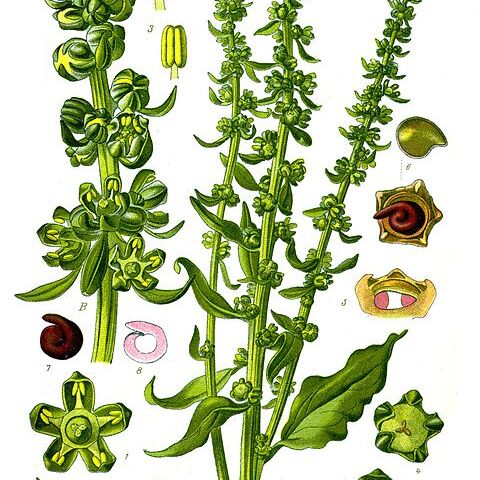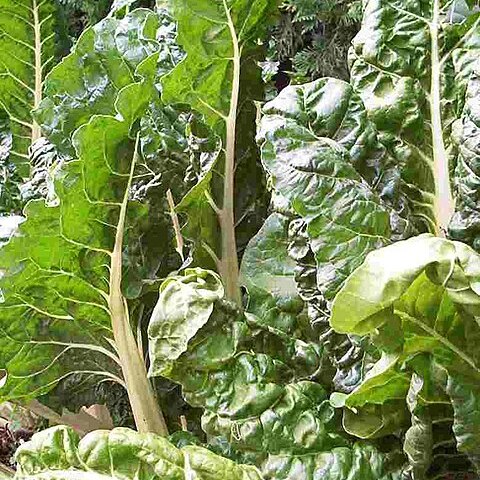Herbs, annual, biennial, or perennial, often with fleshy, thickened roots, glabrous throughout. Stems erect or procumbent, not jointed, not armed, not fleshy. Leaves alternate, petiolate or sessile; blade ovate-cordate to rhombic-cuneate, margins ± entire, apex obtuse . Inflorescences spikelike cymes or glomerules, ebracteate at least in distal 1/2. Flowers bisexual, bracteate; perianth segments 3-5, distinct, sometimes petaloid, rounded or keeled abaxially, wings and spines absent; stamens 5; ovary semi-inferior; stigmas usually 2-3(-5), connate basally. Fruiting structures achenes, connate with receptacle, often enclosed by swollen perianth. Seeds horizontal, orbicular or reniform; seed coat dark brown, smooth; embryo ± annular, perisperm copious. x = 9.
Annual, biennial or perennial herbs, glabrous or nearly so. Stems green, yellowish or red. Lvs alternate, flat or rugose, entire or nearly so; basal lvs long-petiolate, often large. Fls ☿, 1-few in cymes; cymes in spicate infls. Bracteoles 2. Perianth segments 5, usually green, incurved, thickening and hardening towards base at fruiting. Stamens 5. Ovary semi-inferior. Stigmas 2-3. Frs often adhering together by the enlarged perianth, the whole fruiting mass or glomerule forming a hard mass. Seed 1, horizontal, tightly enclosed in covering mainly formed by perianth.
Annual, biennial or perennial herbs, glabrous. Leaves flat, entire. Flowers bisexual, in small clusters forming a slender spike; clusters subtended by a bract and a pair of bracteoles. Perianth 5-lobed. Stamens 5. Ovary semi-inferior, connate with perianth tube; stigmas 2 or 3, sessile, ovate, papillose on inner surface. Fruit with hard apex which eventually falls away as an operculum. Seed horizontal; testa crustaceous; embryo almost annular; perisperm abundant, central.


